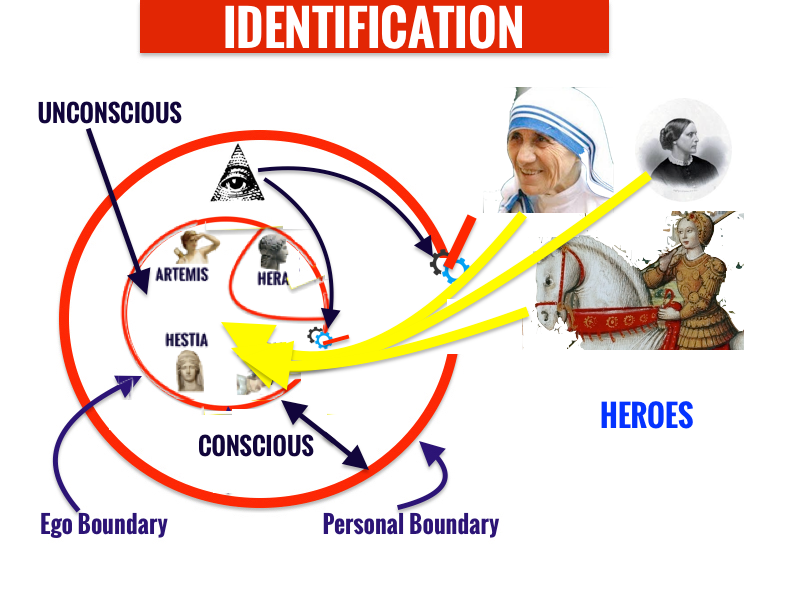On the surface, you might think the unconscious modeling of one's own identity on another person's character and behavior to be more on the immature side, and based in too much of what the Self Psychologists have called “false self.” However, when done in small amounts, for example, in having heroes even into mature, adult life, or in a deep bonding of the shared identity between two mature partners at that “mandorla” intersection of their boundaries, you might also see how identification can also be a natural, mature, higher level feature of being human.
Again, we are reminded of some of the basics of what you can call, “high character,” or “maturity.” That which includes strong, mutually respectful boundaries, and so knows the limits of which one owns and is capable of or responsible for, which has curiosity and self-observation, certainly that which is constructive and win/win in decision-making, yet also is characterized by patience and in the Aristotelian sense, is balanced - neither too much of one thing, nor too much of its opposite. This latter feature of character maturity is what I would like to call our attention to with identification.
We underline the notion, then, that in small amounts, identification with noble people, our heroes, our partner, our beloved parent, and best friends allows us to grow both in maturity of character, but also in a way which affords kinship and even compatibility with those same people. You may have heard of the saying, “You become the company you keep,” or “Birds of a feather, flock together.” These are attestations to kinship and the unavoidable and often positive outcome of identification happening in our lives, when we spend time with those whom we ought to strive to be a bit more similar to.


